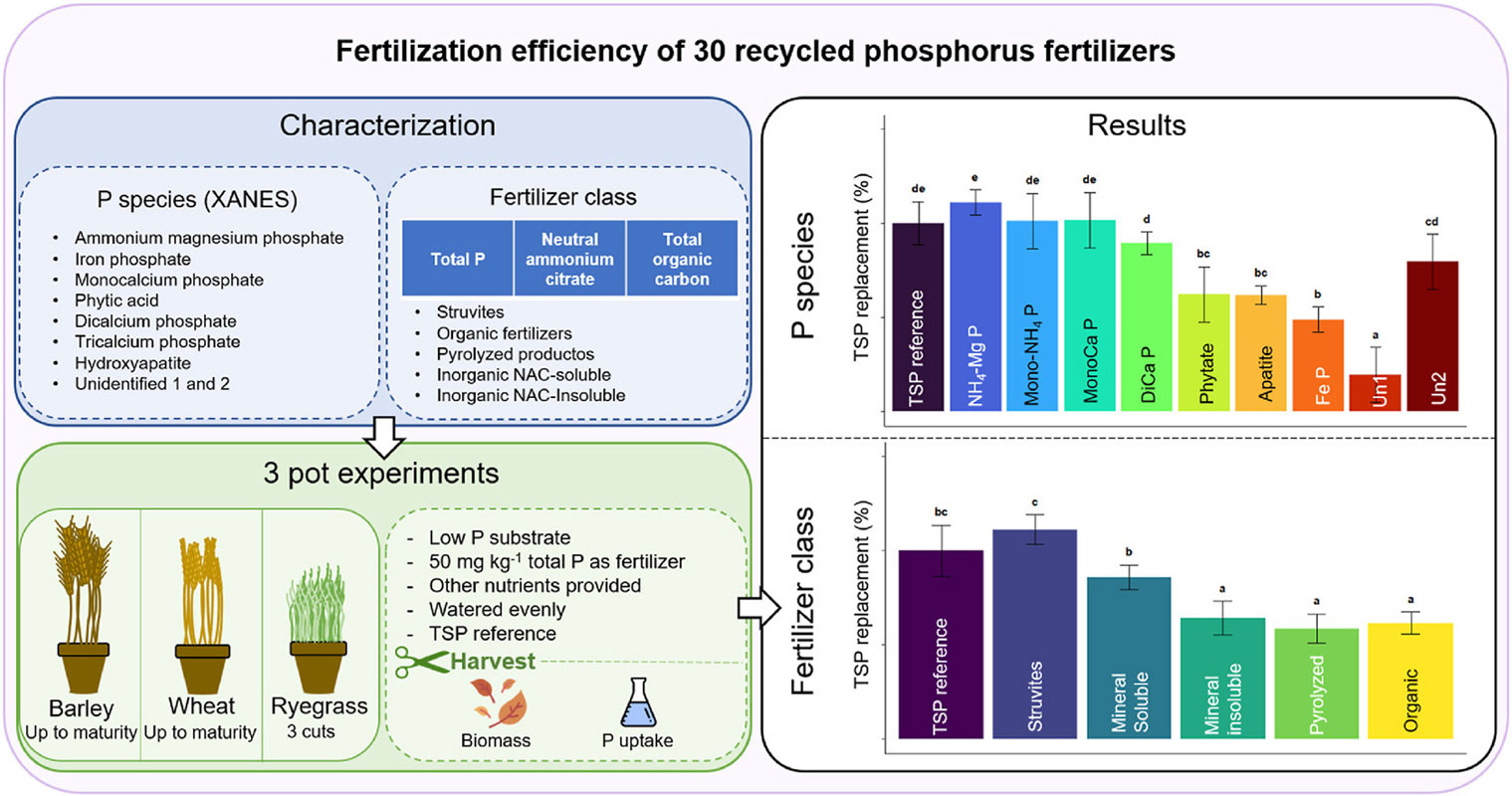Title: Fertilization efficiency of thirty marketed and experimental recycled phosphorus fertilizers
Authors: Alicia Hernandez-Mora, Olivier Duboc, Enzo Lombi, Else K. Bünemann, Kari Ylivainio, Sarah Symanczik, Antonio Delgado, Nadine Abu Zahra, Johanna Nikama, Lucia Zuin, Casey L. Doolette, Herbert Eigner, and Jakob Santner
Journal: Journal of Cleaner Production
Recycling phosphorus (P) from waste streams like sewage sludge, animal manures or food industry by-products is required to sustain soil fertility without depleting non-renewable P resources. Several technologies are available for P recovery, leading to fertilizers differing in P solubility and bioavailability. In this study, thirty fertilizers obtained through different technologies were tested to assess if their fertilization efficiency was equivalent to mineral soluble fertilizer applied as triple superphosphate (TSP). The main selection criteria were (1) ensuring a wide chemical diversity, and (2) choosing products already on the market or at a late stage of development, to encompass a representative selection of current and future recycled fertilizers. The products were classified according to their organic carbon content and neutral ammonium citrate (NAC), and the main P species of each fertilizer was determined through K-edge and L2,3-edge X-ray absorption near edge structure spectroscopy (XANES). Three pot experiments with wheat, barley and ryegrass were conducted in three growing substrates with contrasting properties, all within a pH range of 5.8-6.9. Fertilizers containing ammonium magnesium phosphate, monoammonium phosphate, monocalcium phosphate, and dicalcium phosphate type species as dominant P species showed a similar fertilization efficiency to TSP, while fertilizers with hydroxyapatite, tricalcium phosphate, phytic acid or iron phosphates as their main P species had lower fertilization efficiencies. We conclude that while the trend towards high-efficiency, refined inorganic recycled P fertilizers is positive, lower-performing, mostly unrefined fertilizers must be assessed in light of their long-term P supply potential and additional benefits to soil health owing to their content of organic matter and other nutrients.
The paper is open access and available via the following link:
https://www.sciencedirect.com/science/article/pii/S0959652624024065

